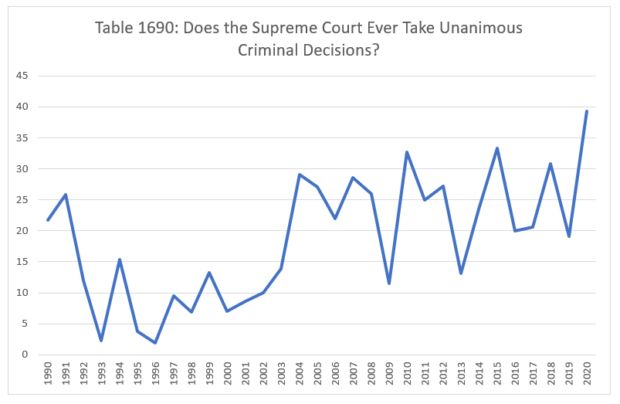Last time, we reviewed the year-by-year percentage of the Supreme Court's civil caseload that is drawn from Appellate Court cases with a dissenter to evaluate the claim that a petition for leave to appeal from a unanimous decision is a hopeless exercise. This time, we're looking at the Court's criminal cases. Just like last time, the graph reports the percentage of cases with a dissenter below, so if the Court only reviews divided decisions, it should be close to 100%.
It isn't. The share of divided Appellate Court decisions was 21.74% in 1990 and 25.86% in 1991, but fell for most of the rest of the nineties – 11.96% (1992), 2.33% (1993), 15.38% (1994), 3.8% (1995), 1.85% (1996), 9.52% (1997) and 6.94% (1998). After a one year uptick to 13.21% in 1999, it was back in single digits in 2000 (6.98%) and 2001 (8.62%).
Over the past twenty years, divided decisions have become a bit more prominent in the criminal docket, but not much. By 2007, cases with dissenters had risen to 28.57%. By 2010, it was 32.73%. It fell to 13.16% by 2013 but was back up to 23.53% in 2014 and 33.33% in 2015. In 2016, the share was 20%. After being nearly flat the following year at 20.59%, it rose to 30.77% in 2018. Divided decisions were 19.05% of the criminal docket in 2019, but so far in 2020, 39.29% of the criminal docket had dissenters below.

Join us back here next time as we turn our attention to a new topic.
Image courtesy of Pixabay by John DiLiberto (no changes).
Originally published by Illinois Supreme Court Review.
The content of this article is intended to provide a general guide to the subject matter. Specialist advice should be sought about your specific circumstances.
